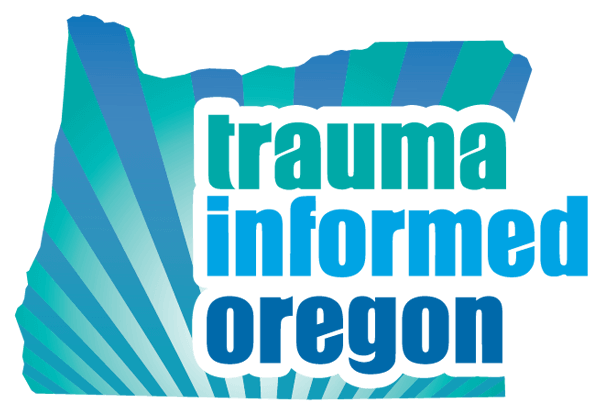TIO Courses and Trainings
 Trauma Informed Care Trainings and Courses
Trauma Informed Care Trainings and Courses
TIO has many training offerings to help advance individual and organizational understanding of trauma informed care, principles, and practice. To make this information easily accessible, we have designed multiple pathways to participation.
Introduction to Trauma Informed Care
Learn the basics of trauma informed care with TIO’s four self-directed modules. TIO’s Introduction to TIC Online Training Modules include four free modules that walk you through the basics of trauma informed care, as well as an introduction and closing video.
This is the first video in the Intro to TIC series. Register for the free course »
Foundations of Trauma Informed Care
1. Asynchronous Foundations of TIC (AKA Self-Led Online Course)
This platform consists of eight short videos which cover the foundational topics of trauma informed care. It includes access to a 15-page workbook with thought-provoking questions to aid in the reflection and application of the information. Viewers are encouraged to choose their own adventure with this resource. Follow along independently or engage a larger group and use the workbook questions to facilitate dialogue.
This is the first video in the Foundations series. Watch all videos »
2. Synchronous Foundations of TIC (AKA Instructor-Led Training of Course Material)
In this format, the foundational material is offered as a series. It is facilitated online with two trainers and is offered in four two-hour online sessions, totaling 8 hours of learning. All offerings are limited to 40 participants to allow for more engaged learning. Discussion prompts and breakout sessions are built in, with participation highly encouraged. Participants are expected to attend all sessions.
No Cost
We offer the Synchronous series at no cost to the public at various times throughout the year.
Please respect that our no-cost option is only available to our Oregon-serving community members.
Organizational Series
For larger teams who would like to experience this material together, we can work with you to schedule the series accordingly, subject to trainer availability. The cost per series is $5,000.
 Advanced Trauma Informed Care Training and Course Offerings
Advanced Trauma Informed Care Training and Course Offerings
Training of Trainers
For individuals and organizations wanting to offer trauma informed care training in their communities and/or organization, joining a Training of Trainers can increase confidence and preparation.
Our Training of Trainers consists of four days of in-person learning and practicing of TIO’s Foundational material. Participants are provided with a Trainer’s Manual that offers potential lesson layouts, sample scripts, and supportive materials. Lessons are tailored to adult learning styles and participants are provided with opportunities to train amongst their cohort.
We have very limited capacity to offer our Training of Trainers (ToT) each year and spaces can fill quickly. If you have signed up on our previous ToT waitlist, we will reach out to you to see if you are still interested. Check our events calendar for current offerings.
Culturally Specific Adaptation
Attributes include co-creating a safer affinity space, allowing for decreased focus on performance based, code switching, and centering White participant learning to support a potential decrease in racism and oppression.
Spanish Cultural Adaptation
Attributes include going beyond a translation, considering key aspects involved in learning, tailoring data, design and content to the community. Guest speakers bring depth and new perspectives.
Advanced Courses
We offer a variety of courses and events that help advance the practice of trauma-informed practice beyond the basics at various times of year. Check our events calendar for current offerings.
- Workforce Wellness
- Chitlins Effect
- Supervision for TIC
- TIC Standards of Practice
- Intersections of DEI and TIC
- De-escalation
- The Science of Stress
Additional Training from TIO
TIO provides trainings customized to your organization’s needs, including response to specific events or challenges. TIO will consider your organization’s preferences in trainer qualities, number of participants, desired outcomes, mode of delivery (in-person or virtual), participant needs, accommodations, and budget. Contact us for a consultation or a quote for training.
